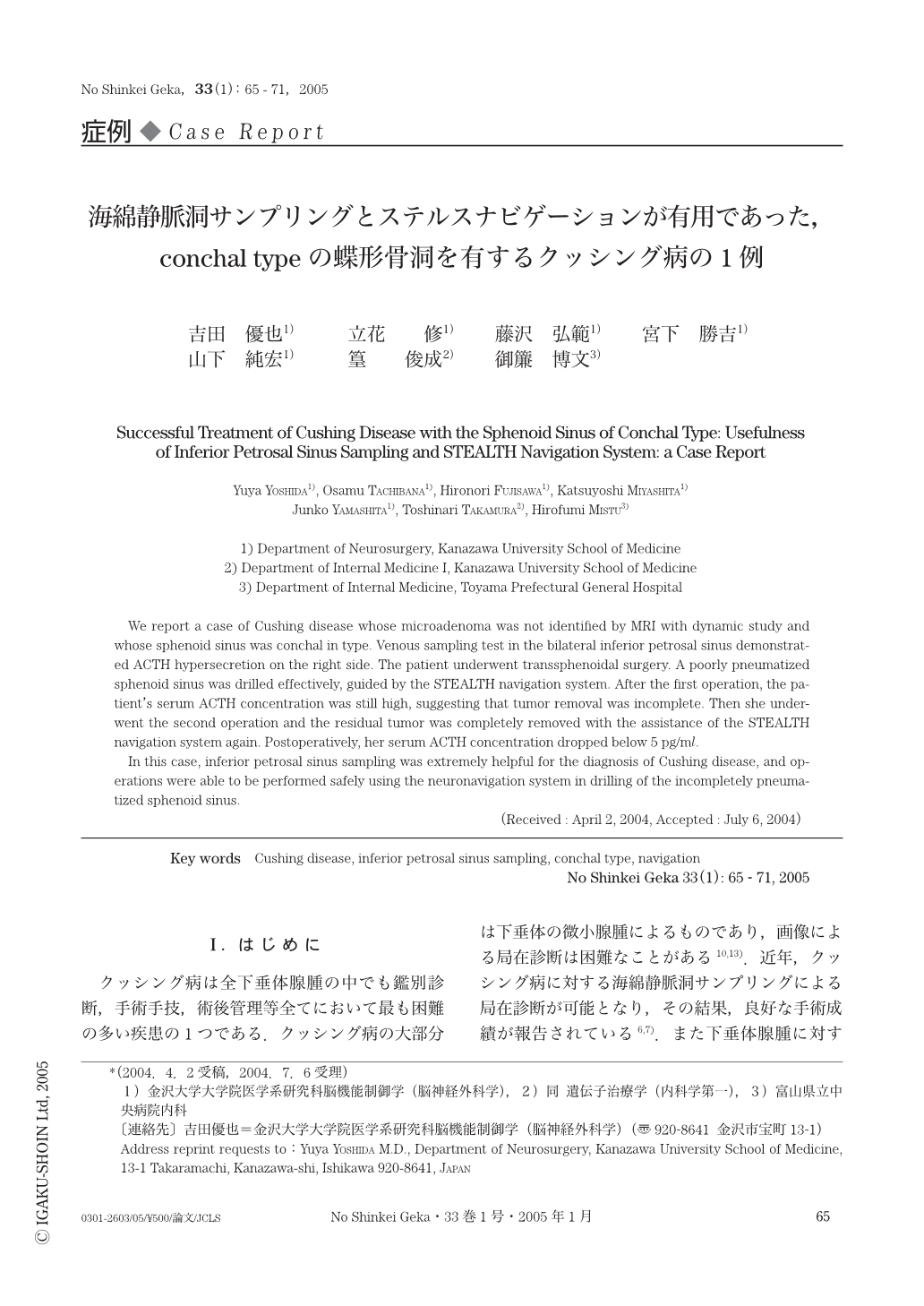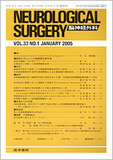Japanese
English
- 有料閲覧
- Abstract 文献概要
- 1ページ目 Look Inside
- 参考文献 Reference
Ⅰ.はじめに
クッシング病は全下垂体腺腫の中でも鑑別診断,手術手技,術後管理等全てにおいて最も困難の多い疾患の1つである.クッシング病の大部分は下垂体の微小腺腫によるものであり,画像による局在診断は困難なことがある10,13).近年,クッシング病に対する海綿静脈洞サンプリングによる局在診断が可能となり,その結果,良好な手術成績が報告されている6,7).また下垂体腺腫に対する経蝶形骨洞到達法に際して,蝶形骨洞の含気化が不完全な場合,鞍底部方向を見失わないように注意しながら鞍底部を十分に開窓する必要がある.今回,われわれはMRIでは同定されず,海綿静脈洞サンプリングにより局在診断に至り,蝶形骨洞がconchal typeのクッシング病のためステルスナビゲーションを用いて手術を施行した1症例を経験し,良好な結果が得られたので報告する.
We report a case of Cushing disease whose microadenoma was not identified by MRI with dynamic study and whose sphenoid sinus was conchal in type. Venous sampling test in the bilateral inferior petrosal sinus demonstrated ACTH hypersecretion on the right side. The patient underwent transsphenoidal surgery. A poorly pneumatized sphenoid sinus was drilled effectively, guided by the STEALTH navigation system. After the first operation, the patient's serum ACTH concentration was still high, suggesting that tumor removal was incomplete. Then she underwent the second operation and the residual tumor was completely removed with the assistance of the STEALTH navigation system again. Postoperatively, her serum ACTH concentration dropped below 5 pg/ml.
In this case, inferior petrosal sinus sampling was extremely helpful for the diagnosis of Cushing disease, and operations were able to be performed safely using the neuronavigation system in drilling of the incompletely pneumatized sphenoid sinus.

Copyright © 2005, Igaku-Shoin Ltd. All rights reserved.


